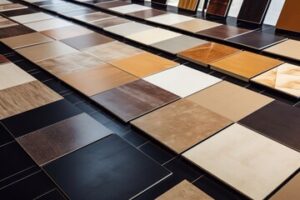Choosing the right solar installation company can be an intimidating task. Look for a business that offers free consultations and transparency about its licensing details.

They should also clearly explain any energy savings estimates and potential cost benefits of a system. You should also know which solar incentives you’re eligible for. Contact Solar Installers In Salt Lake City for professional help.
Solar photovoltaic (PV) system installers assemble, set up, and maintain rooftop or other systems that convert sunlight into electricity. They design a solar installation plan for each client, and connect the PV panels to the client’s electricity system. They also inspect the panels, ensuring that they are functioning correctly and according to local and national codes and standards.
They may also install electrical components and perform other tasks to prepare the system for use. These duties may include determining appropriate sizes, ratings, and locations for overcurrent devices, disconnects, grounding equipment, or surge suppression equipment. They may also test operating voltages to ensure that they are within acceptable limits for power conditioning equipment, such as inverters or controllers. They may also perform maintenance on the solar panel array, and apply weather seals.
The job of a solar panel installer requires physical endurance, attention to safety protocols, and a combination of mechanical and electrical skills. In addition, they must be able to work well with other team members, including other solar installers within the company and laborers of varying specializations.
A high school diploma is required for this position, but further education or training in solar energy technology can be beneficial. Some of these professionals are trained on the job, and others obtain an associate degree or participate in a vocational school program. Other options for career advancement include becoming a solar consultant or electrician, which require additional licensing and training.
What creative methods have you used on previous projects to increase efficiency or reduce costs? This question assesses the candidate’s ability to think outside of the box and implement innovative solutions that align with industry trends toward sustainability and efficiency.
How did you develop your problem-solving skills? This question evaluates the candidate’s ability to work with a team and find solutions to difficult challenges. It can also help determine whether or not the candidate has good interpersonal communication skills, which are essential for this position. In addition to working with other solar installers, this person will likely be interacting with clients, so it is important to be polite and courteous.
Education and Training Requirements
Those who wish to become professional solar installers must first undergo the proper education and training. This can take place at many different educational institutions and even through on-the-job experience. Many programs are offered at vocational schools, trade schools and community colleges. They may involve certificate or associate degree programs and could last anywhere from a few months to two years. Typically, they are designed to teach students the skills necessary for working on PV systems and the fundamentals of renewable energy technology.
Additionally, aspiring solar installers should also complete a state-approved certification exam. These exams are usually written or practical and can be quite demanding. However, they are required in order to prove subject-matter expertise and ensure that all professionals meet a certain standard of quality.
The North American Board of Certified Energy Practitioners (NABCEP) is one of the most recognized providers of training and certification in the United States for solar photovoltaic installation. This organization offers training programs, mock quizzes and other resources that can help prepare individuals for the NABCEP PV associate certification exam. Moreover, trade schools and technical schools also often offer certificate or associate degrees in PV installation.
In addition to acquiring knowledge and skills, it is also important for future solar professionals to develop strong customer service skills. This can help them build and maintain positive relationships with clients, facilitating smooth project execution and ensuring customer satisfaction. Similarly, they must also have good problem-solving abilities as each installation site presents unique challenges that they must address.
Solar installers must also be physically fit in order to complete the job. This is because they frequently ride in trucks and spend a lot of time on roofs or ladders. Additionally, they must be able to access tight spaces like attics and crawl spaces. Therefore, individuals with acrophobia or any other fear of heights should not pursue this career.
Finally, it is a good idea for new solar installers to build up a portfolio of work that they have completed. This is particularly valuable when seeking jobs or collaborating with other solar professionals. A portfolio can demonstrate that an individual has the right combination of skills and experience to be a valuable asset on any given project.
Working Conditions
Solar energy is a growing industry and there are a lot of jobs out there for people who work in it. These are known as solar photovoltaic installers and they assemble, install and maintain rooftop or other systems that convert sunlight into electricity. They also evaluate a client’s property and determine the best installation plan to meet their needs. They can choose to work for companies that specialize in residential or commercial projects or both.
Some people choose to get involved with this career because they are committed to reducing the carbon footprint of their homes or businesses. Others are driven by the monetary incentives offered by state governments to encourage citizens to use solar power. In this way, they can decrease the pressure on the local gas and electric grids and save or even make money from their energy usage.
Many states require solar PV installers to be licensed. In some cases, the licensing process can take up to a year. This involves completing an application, undergoing a background check and passing an exam. There are also some other requirements that may vary by state. For example, in California, solar workers must complete a training program and be certified by the state.
The working conditions of a solar PV installer can be challenging and stressful. They often have to work long hours in harsh weather and spend a lot of time on roofs. Moreover, they must wear safety gear to protect themselves from falling debris. These safety measures include protective clothing, gloves and footwear. They should also have access to personal safety equipment like respirators and eye protection.
People who are interested in this career should know that they will need a lot of on the job training to become an experienced solar photovoltaic installer. This will usually last a month to a year and will teach them the basic knowledge of the solar PV system as well as the necessary skills for the job. The training will usually be provided by the solar company that hires them.
People who are interested in becoming solar PV installers can look for local training programs or join an electrical union to gain the experience and credentials needed for the job. For instance, O’Connell Electric Co. in Victor has a solar division and provides both apprenticeship and journeyman training for those who want to work in the field.
Salary
If you’re looking to enter the solar energy industry, a career as a solar installer will provide good pay. These professionals can expect to earn between $23,200 and $47,000 a year. The exact salary will depend on where you live, your level of education, and your years of experience. Those who have more knowledge of the industry will likely earn higher salaries. You can take courses regarding photovoltaic solar panel technology at a local community college or technical school, or you can complete a work apprenticeship through a specific company. Some employers may also require that you have previous experience in construction-related occupations.
The tasks that a solar panel installer will carry out are typically very complex, and you’ll need a great deal of training in order to do them well. On the job training can last anywhere from a month to a full year. During this time, you’ll be taught about the tools that you will need to use and how to properly install a solar photovoltaic system. This is usually conducted under the supervision of experienced solar installers.
It’s important to have excellent problem-solving skills and physical stamina if you want to be successful in this career. This is because many solar installation jobs involve working on rooftops and other high structures. You’ll also need to be able to work in extreme weather conditions. If you have the right qualifications, you can make a good living in this field.
Some states will require solar installers to have a license, so it’s best to check your state’s requirements. In addition, you can gain more credibility and industry recognition by obtaining certification from the North American Board of Certified Energy Practitioners.
In addition to being a solar installer, you can also pursue a career as a solar energy salesman or a solar panel design consultant. These positions pay slightly less than a solar installer, but they do offer more opportunities to travel and network. If you’re interested in these positions, you’ll need at least a bachelor’s degree and additional solar or business-related training.
